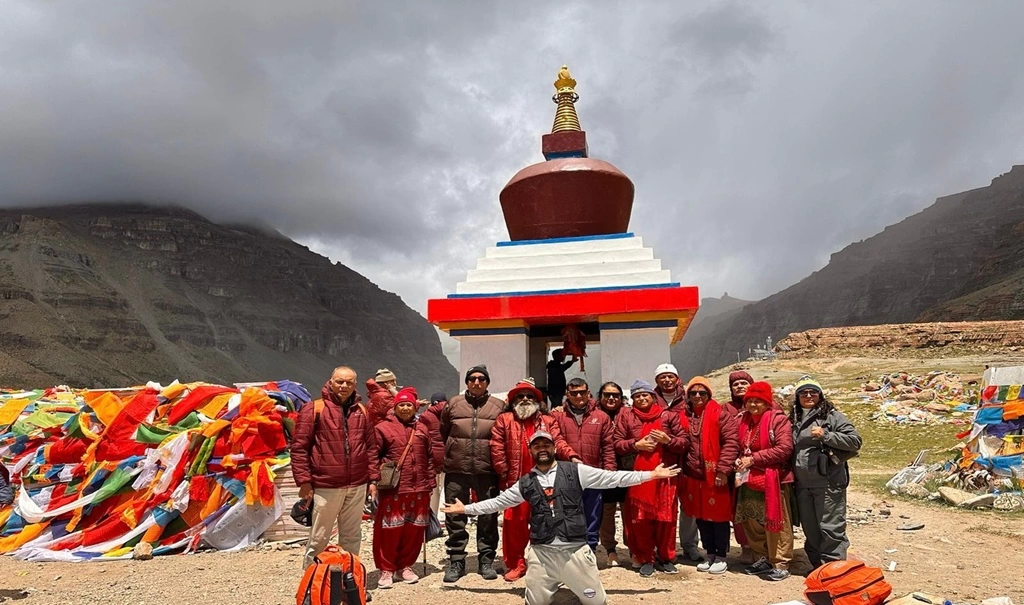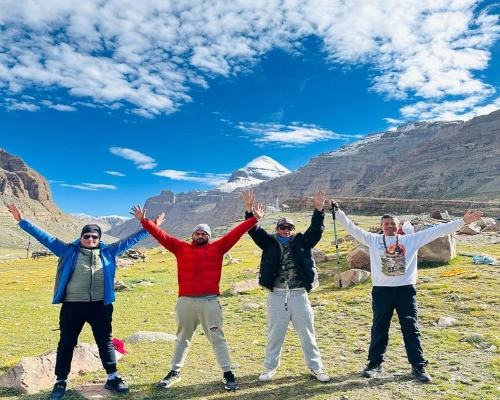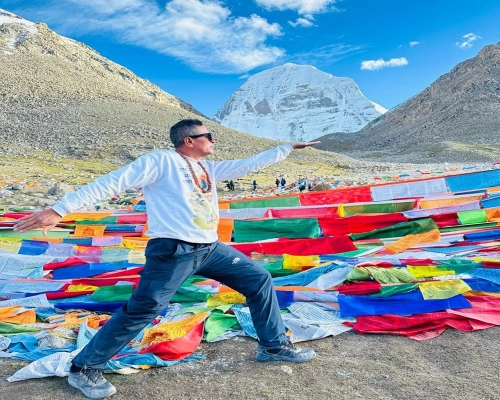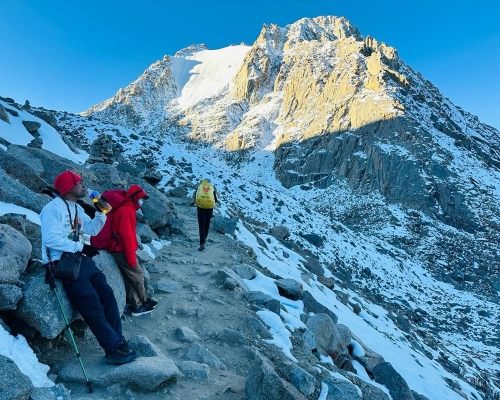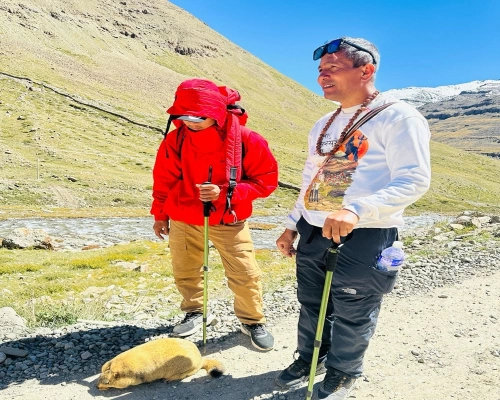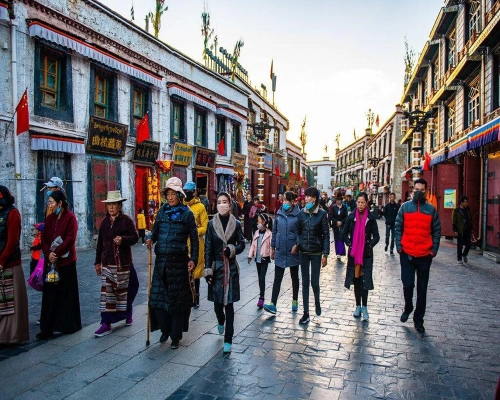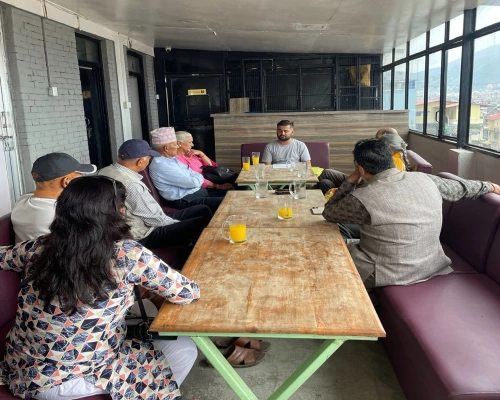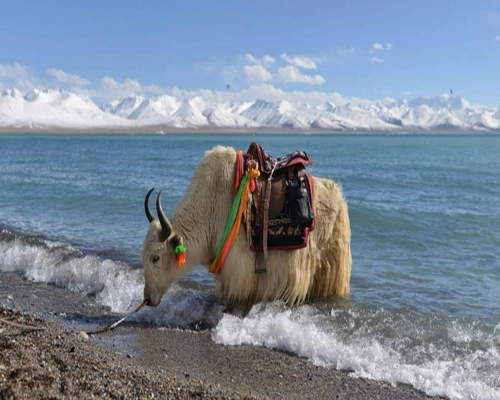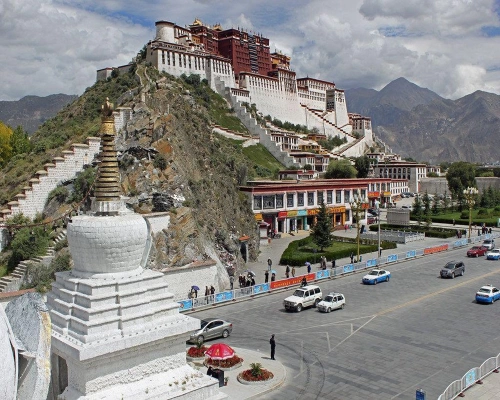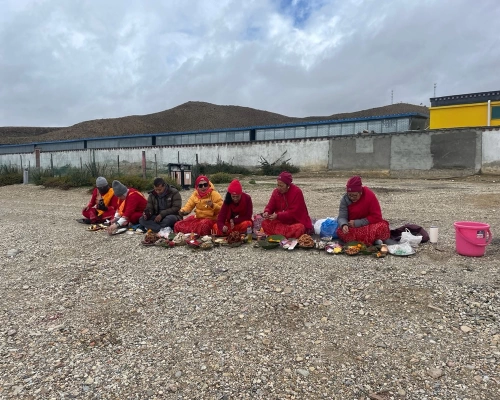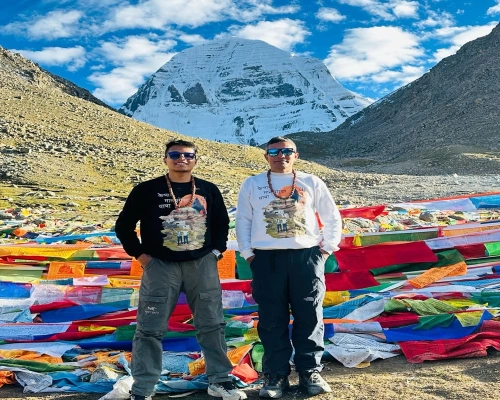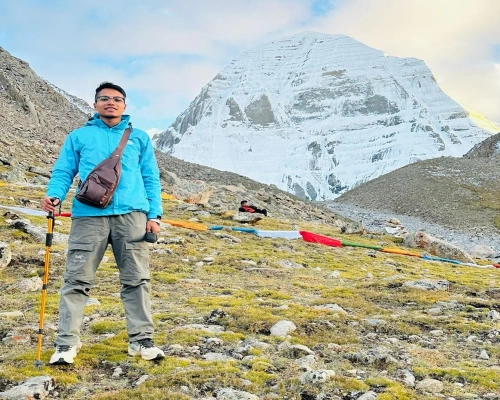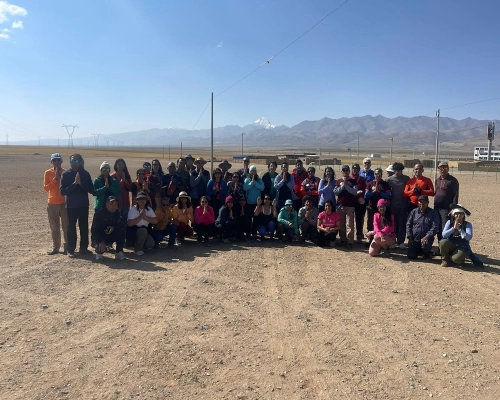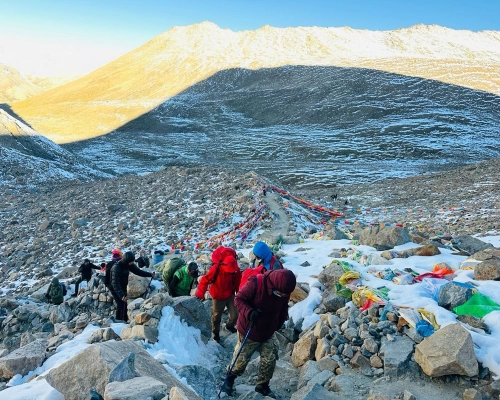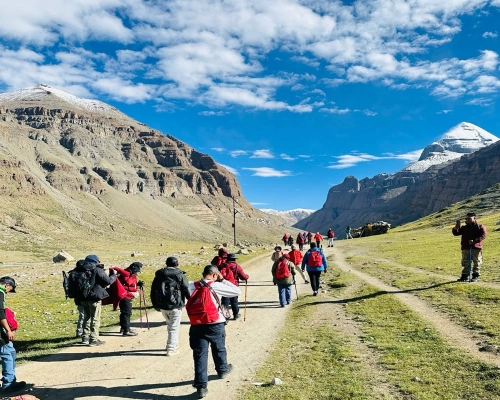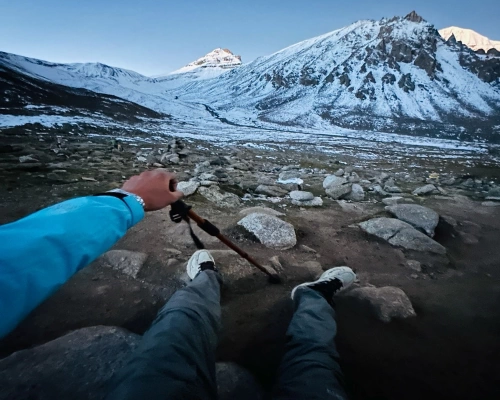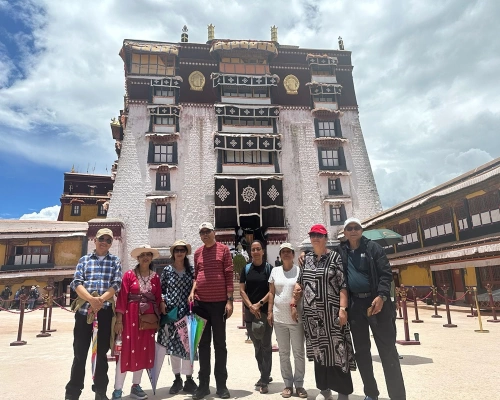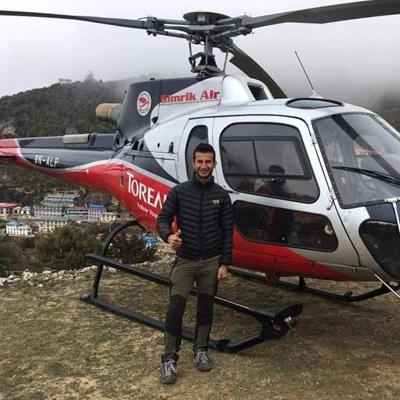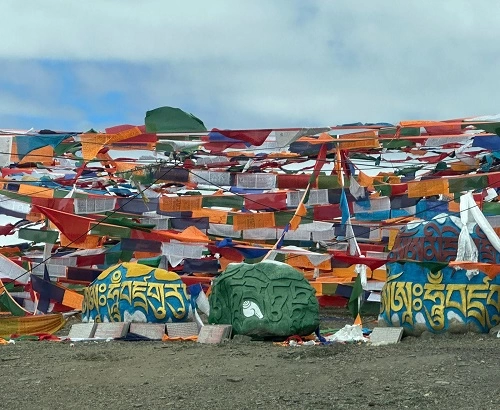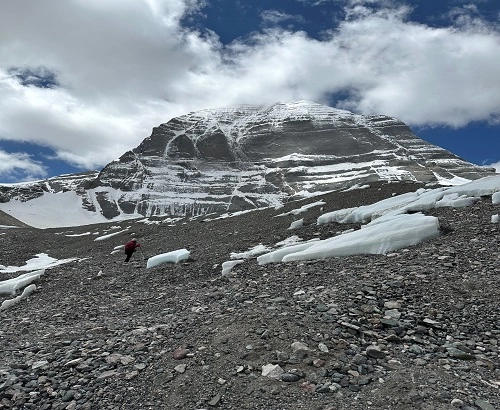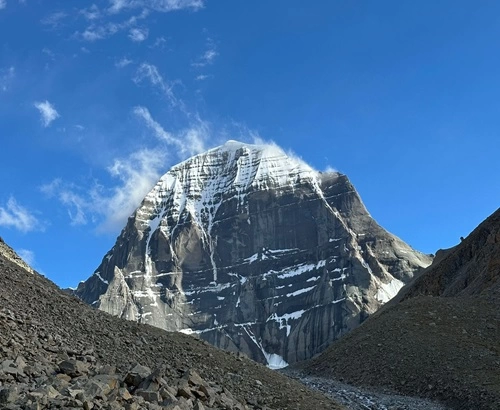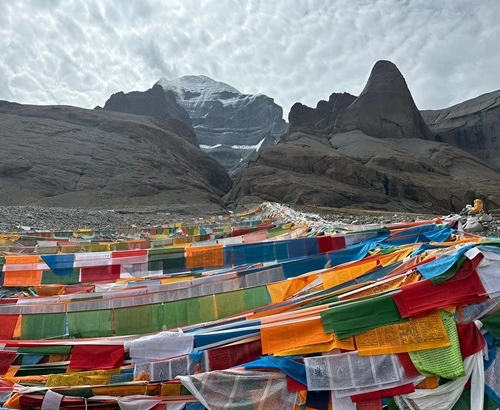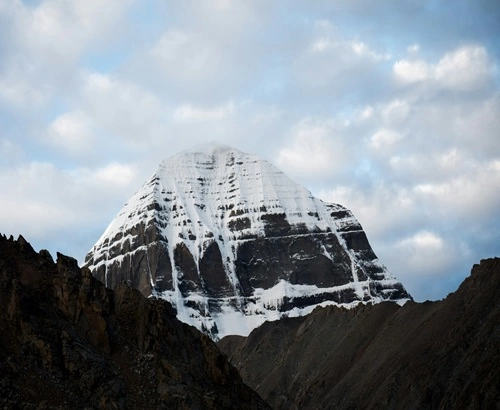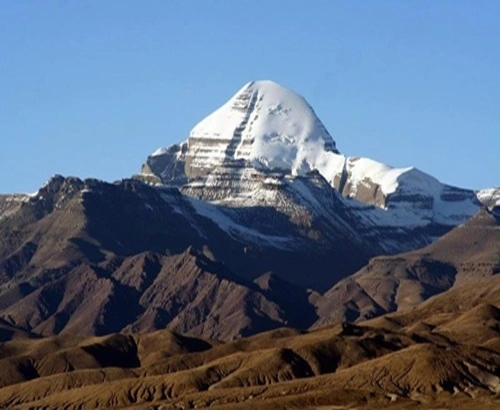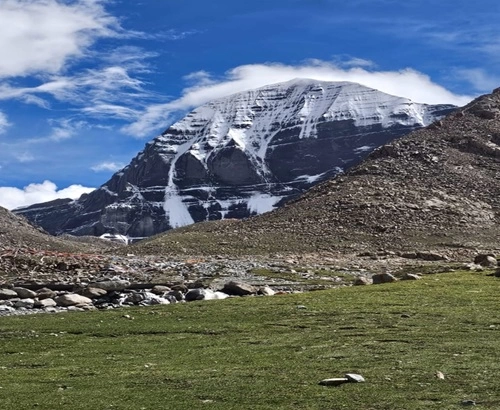Information About Kailash Saga Dawa Festival Tour 2026
The Kailash Saga Dawa Festival Tour is a pilgrimage with a deeply spiritual and culturally enriching journey to Mount Kailash in Tibet, bringing in the auspicious timing with the Saga Dawa Festival festival which falls on the full moon day of the fourth Tibetan month, on May 31, 2026. This is one of the most significant days in Tibetan Buddhism, commemorating the birth of Lord Buddha, the Enlightenment of Lord Buddha, and the Parinirvana (death) of Lord Buddha. Rarely do pilgrims and spiritual seekers get to mingle with the wonderful rituals of this auspicious event.
This festival nonetheless commends the birth, enlightenment, and parinirvana (passing away) of Lord Buddha. This means that time has got high significance from the religious perspective. It is on this day that pilgrims assemble in hundreds from different parts of Tibet and beyond to hold some rituals around Mount Kailash, especially in the Tarboche (Serchung) area, whereby a massive flagpole covered with prayer flags is raised under the guidance of some renowned Tibetan lamas.
The Saga Dawa Festival Tour 12 Days usually begins in Kathmandu, after which the participants are briefed on the upcoming tour and get acclimatized to high-altitude conditions. From Kathmandu, the tour carries on to the Nepal-Tibet border at Kerung, thereby crossing to Tibet and going through impressively beautiful landscapes until it reaches Lake Manasarovar holy site revered by Hindus and Buddhists alike. Darchen is next, the gateway to Mount Kailash, the venue for celebrations of the Saga Dawa Festival. Thousands of pilgrims gather at Tarboche to witness the ceremonial raising of a giant prayer flag pole, chanting, praying, and dancing. You will also do the venerated Kailash Kora- a 53-kilometer circumambulation of Mount Kailash, done over three days.
Kora transforms not only Buddhists but also Hindus, Jains, and Bon practitioners, revering Mount Kailash. The trek around Akshardham physically invests the pilgrimage with time for reflection and blessing.
The Saga Dawa Festival in Mount Kailash offers an opportunity for travellers to observe and partake in Tibetan activities like prayers, dances, chanting, or worship. Travellers get to pray, worship with the locals, and visit other nearby monasteries to understand the rich culture of the region further.
Highlights of Saka Dawa Festival Tour to Kailash
- View of Mount Kailash, revered to Hindus and Buddhists and Jains and Bon.
- Take part in the Kailash Kora which involves walking a 53 km distance around Mount Kailash.
- Experience the peaceful landscape of Lake Manasarovar.
- Spiritual believers can take holy baths in Mansarovar before conducting prayers from its shoreline.
- Explore ancient Chiu Monastery, which provides visitors with spectacular views that extend across Lake Manasarovar and its neighboring scenery.
- Reach the challenging Dolma La Pass at 5,645m elevation.
- The sacred Gauri Kund (Lake of Compassion) holds religious importance to Hindu mythology.
- Experience the Tibetan Plateau through its expansive terrain while observing Tibetan nomadic traditions.
- Experience the cultural vibrancy of Lhasa (for those on an extended itinerary).
- Observe traditional Tibetan Buddhist rituals in monasteries along the route.
- Journey through the Nepal-Tibet border at Kerong with stunning Himalayan views.
Advantages of Kailash Saga Dawa Festival Yatra With Adventure Altitude Treks
- Private Transportation: Comfortable and convenient pickups and drops at all airports with private vehicles.
- Safety First: The services include a complete first aid kit packed with an oximeter for monitoring blood oxygen saturation, as well as pulse and heart rate.
- Exclusive Trekking Gear: The expedition team has access to PAC (Portable Altitude Chamber) together with supplemental oxygen as an additional safety measure. The trekking gear we supply includes down jackets, t-shirts, and caps for every client who makes a specific request.
- Emergency Support: Emergency evacuation arrangements exist with the insurance company guaranteeing full coverage of expenses under specific circumstances. The trekking company provides helicopter medical rescue options for emergency medical situations.
- Seamless Communication: The trek offers constant connectivity through the provision of a Nepali SIM card that includes a 10GB data plan.
- Expert Guidance: Our trekking guides possess comprehensive altitude sickness management skills as well as expertise in trail mapping, and they are Tibetan or Nepali experts who hold insurance coverage.
- Yak or Porter Support: Yaks and porters will provide baggage transport services during your Kailash Kora journey, which will simplify your trekking experience.
- Clean & Safe Drinking Water: Water purification tablets accompany the trek to ensure clean drinking water safety at all times.
- Dedicated Nepali Team: Our Nepali team members dedicated to your care will assist you throughout your journey to guarantee your well-being and comfort at all times.
Saga Dawa Festival Tibet 2026
During the Saga Dawa Festival Tibetan Buddhists commemorate the three major milestones of Buddha Shakyamuni's life: his birth and enlightenment as well as his death. The principal festival day for 2026 will occur on June 11th which corresponds to the 15th day of the fourth month in the Tibetan lunar calendar.
The fourteenth day stands as the peak celebration but Tibetans embrace all of the fourth lunar month by increasing their religious devotion.
The Tarboche Prayer Flagpole stands as one of the main religious events that takes place near Mount Kailash during the festival time. At Tarboche the ritual involves a replacement of the old prayer flagpole by a new one which represents ongoing faith and continuous prayer dissemination through flag movements.
Aspect | Details |
Date | May 31, 2026 (15th day of the 4th Tibetan lunar month) |
Significance | Commemorates Buddha's birth, enlightenment, and parinirvana |
Main Activities | Pilgrimages, prayer ceremonies, lighting butter lamps, raising of the Tarboche Prayer Flagpole |
Locations of Celebration | Lhasa (notably around Jokhang Temple and Potala Palace), Mount Kailash region |
Saga Dawa Festival Is Celebrated In Which State?
Saga Dawa Festival in Sikkim
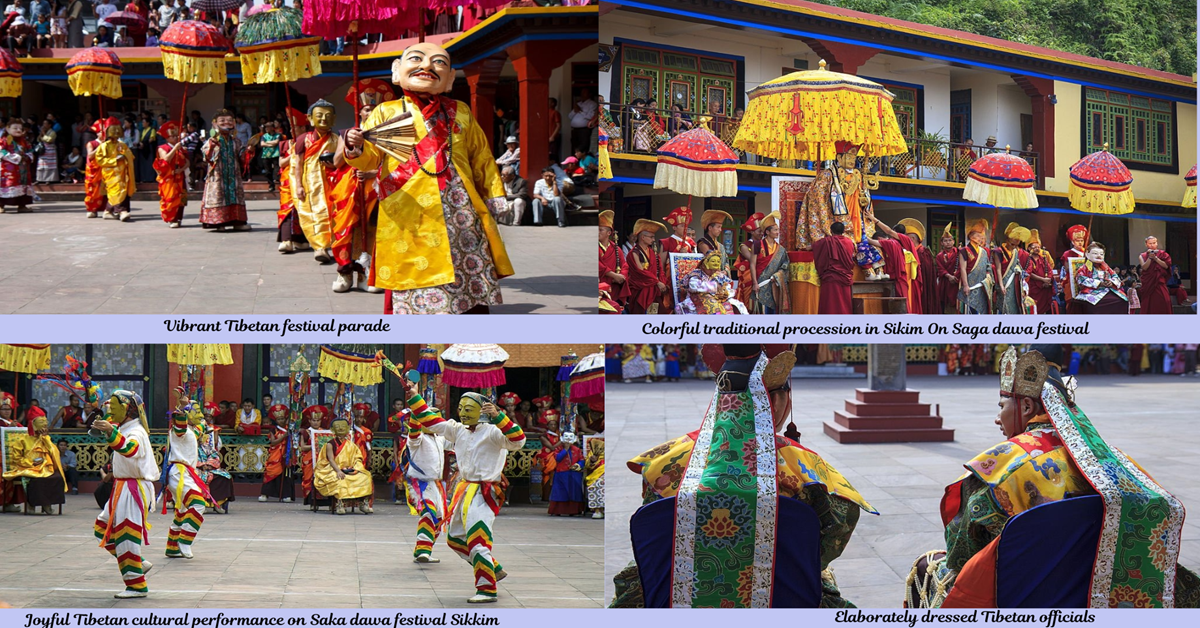
The Saga Dawa Festival emerges as the most significant Buddhist celebration for residents in Sikkim's capital city, Gangtok. This festival takes place on the full moon day of the fourth Tibetan calendar month to honour the birth, enlightenment, and Nirvana of Lord Buddha. During this occasion, people participate in colourful processions where both monks and devotees display sacred texts and religious images along with carrying Lord Buddha statues. The monastic procession originating at Tsuk-La-Khang Monastery in Gangtok begins with monks who perform hymnal chanting while carrying holy religious manuscripts. Devotees perform several spiritual activities throughout the month, including the reading of holy scriptures as well as the lighting of butter lamps in monasteries and charitable acts of donation to the poor, which lead believers toward Nirvana.
Saga Dawa Festival at Mount Kailash
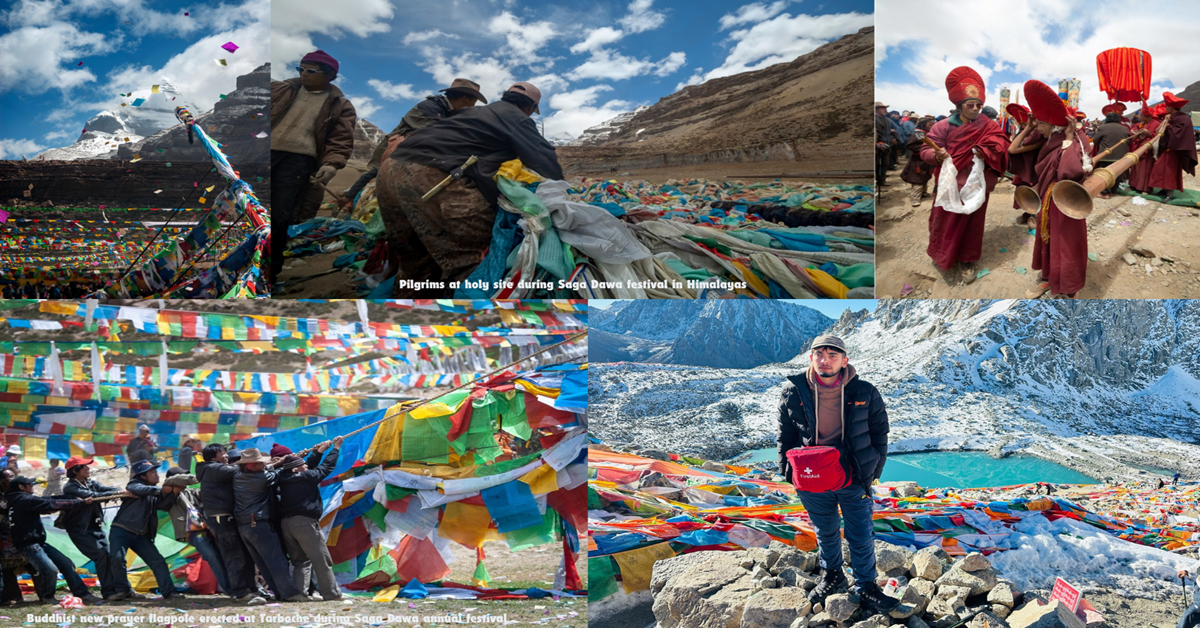
Mount Kailash stands as a sacred place to believers because of the Saga Dawa Festival. Several pilgrims from many parts of Tibet gather at Tarboche to witness the flagpole-erecting ceremony close to the southern base of Mount Kailash. Every year, as part of this ritual, the flagpole gets lowered so pilgrims can replace old prayer flags with fresh ones, which contain individual prayers. The flagpole must be raised to a completely vertical position according to tradition since any imperfection is believed to bring misfortune to Tibet. After the flagpole-erecting ceremony, many pilgrims perform spiritual enlightenment through the kora pilgrimage, which circles Mount Kailash for 52 kilometers.
Saga Dawa Festival History
Origin in Tibetan Buddhism:
Saga Dawa, or Saka Dawa, is within Tibetan Buddhist customs. "Saga Dawa" means "the fourth month" in Tibetan: that is, the month in which the commemoration takes place. It is thought during this month that the karmic results of virtuous and non-virtuous actions are multiplied, making it one of the most favorable months for spiritual practice.
Connection to Gautama Buddha:
- The festival in the life of Buddha celebrates three critical incidents:
- The birth of Buddha as Prince Siddhartha in Lumbini (modern-day Nepal)
- The attainment of enlightenment under the Bodhi tree at Bodh Gaya, India
- His passing away in Kushinagar, India, marked his attainment of liberation from the cycle of rebirth.
- Saga Dawa is the celebration of the belief that these events occurred on the same day of the year.
Are The Saga Dawa Festival Celebrated in Sikkim and Mount Kailash the Same?
Saga Dawa Festival is celebrated both in Sikkim and at Mount Kailash. However, the differences existing in the manner in which it is celebrated in the two realms give credence to the divergent cultural and geographical contexts that have originated therein.
Common Significance
Religious Importance: Saga Dawa is a festival that recalls the birth, enlightenment, and parinirvana (death) of Buddha Sakyamuni on the lands of Sikkim and Mount Kailash. This is one of the most sacred times in the Tibetan calendar, during which followers engage in acts that endear themselves to people, such as pilgrimages, prayers, and being generous.
Timing: The festival is celebrated on the 15th day of the fourth month of the Tibetan lunar year, which, in the Gregorian calendar, corresponds to mid-May through June. Therefore, in 2026, it will be celebrated on May 31.
Differences in Celebrations
Mount Kailash
Pilgrimage and Kora: The festival at Mount Kailash is centered about the sacred mountain, which is revered by Buddhists, Hindus, Jains, and Bon practitioners. The key event is the Kora, a circumambulation of 52 kilometers around the mountain, believed to wash away the sins and provide spiritual merit. Other events that pilgrims participate in include the Tarboche Flagpole Ceremony, which consists of erecting a 25-meter flagpole as a blessing for the region1312.
Scale and Atmosphere: The festival at Mount Kailash is large, attracting thousands of pilgrims from across Tibet, India, Nepal, and otherwise. This remoteness and sacredness of the place add to its spiritual energy.
Sikkim
Local Traditions: The Saga Dawa Festival in Sikkim is oriented toward the community and local monasteries. Activities include butter lamps lighting, hanging prayer flags, and the release of animals as acts of compassion. These are accompanied by processions of Buddhist relics, chanting, and traditional music.
Cultural Integration: The festival celebrated at Sikkim recognizes and integrates local Sikkimese traditions and is made more inclined to cater for tourists. This is said to merge a spiritual program with cultural festivities made for greater community involvement.
Geographical and Cultural Context
Mount Kailash: The Mt. Kailash festival is in the more remote Ngari region of Tibet, and the deep connection here with the mountain is as a spiritual axis mundi (centre of the universe) for a number of religions. The pilgrimages maintain their spiritual meaning, given the harsh environment and high altitude that adds to their difficulties.
Sikkim: The festival isn't very far in Sikkim, an Indian state with a Buddhist population, life and network for visitors. The festival, locally advertised as Losar, blends diverse aspects of Tibetan Buddhist tradition along with Sikkimese culture.
What Will You See At Saga Dawa Festival in 2026?
The Saga Dawa Festival is another big festival to happen on May 31, 2026, in Tibetan Buddhism, as it marks the birth, enlightenment, and parinirvana (death) of Buddha Shakyamuni. This sacred day has its own set of profound rituals and customs that give us the real in-depth perspective of Tibetan spiritual traditions.
On Mount Kailash, which is revered as the holiest mountain in Tibet, thousands of pilgrims perform a 52-kilometre act of kora, believing that performing kora here during Saga Dawa leads to the liberation of the spirit.
Assemblement of the Tarboche Prayer Flagpole
At the base of Mount Kailash, an important ritual is performed to change the Tarboche Prayer Flagpole. The old pole is dismantled, and a new one covered with multicoloured prayer flags is installed. The performance of this rite is believed to bring good health to Tibet and its people, with the correct placement of the pole being of utmost importance.
Kora
Circumambulation, aka kora, is of special importance in the Saga Dawa festival. Pilgrims go around sacred points such as Jokhang Temple in Lasar, Potala Palace, or the Lingkor road by foot, turning prayer wheels and reciting prayers. For those who perform this work, it is seen as cleansed of all sins and loaded with good karma.
Lighting Butter Lamps
Lighting butter lamps is a common tradition at the festival. Butter lamps, which are filled with yak butter or vegetable oil to provide fuel and then are lit up in temples as well as households. The illumination thrown off by these lights is held to drive away darkness and ignorance, itself symbolizing enlightenment. Throughout Saga Dawa it is said that monasteries are aglow with many thousands of butter lamps.
Acts of Generosity and Compassion
During the fourth month, according to the Tibetan calendar, Tibetans concentrate on building good karma through various virtuous activities. During the fourth month, Tibetans practice virtuous deeds, which include providing food to needy people as well as financial support to monasteries together with maintaining a vegetarian diet. The Lhasa River receives many animals, such as fish, during this practice, which Tibetan people perform to free sentient beings from suffering.
Cham Dance Performances
Religious Cham dances take place at monasteries throughout the observance of Saga Dawa. Traditional ceremonial dances with exquisite masks and costumes are performed to eliminate destructive spirits and to bring blessings to participants. The performances tell tales of divine beings alongside historical episodes that educate while also providing entertainment.
Community Gatherings and Picnics
People gather at Dzongyab Lukhang Park behind Potala Palace during late afternoon hours to participate in "Lingka" activities, which involve family gatherings and picnics. Traditional costumes adorn their bodies as they dine together while dancing to bring forth community unity and cultural heritage.
Best Time, Climate and Weather Circumstances For Kailash Saka Dawa Festival
The best time for the Kailash Saga Dawa Festival Tour falls in May or June, normally in the period corresponding to the Saga Dawa full moon. It just so happens that the period turned out perfect from the weather perspective also because Saga Dawa is in a sanatorium-the occasion being Buddha's birthday, enlightenment, and parinirvana all combined.
The weather in Tibet during this time is not that extreme. However, temperatures can usually rise to 10° and 20° or 50 to 68° F in lower areas like Lhasa, which starts turning really cold if the altitudes are higher than it climbs upwards toward Mt. Kailash. The temperature usually goes below 0° or 32° during nighttime. During the day, it often happens that the Sun tends to keep pouring, though sometimes there is a possibility of rain showers suddenly or even snowfall. In this respect, layering your clothes is really important, with waterproof equipment as well.
Climate conditions are not wet, and with clear skies, the view of the Himalayas is magnificent and includes the sacred Mount Kailash. It lies over 4,500 meters above sea level, and proper acclimatization should be followed in order not to have altitude sickness. In this respect, travelers should drink enough water, avoid hard physical activity during the first stages, and probably take some medicines, such as Diamox.
Accommodations
Accommodations We will provide superior hotels in Kathmandu, usually with all facilities like comfortable beds, attached baths, and WiFi connectivity for better rest and to prepare for your journey. Accommodation in Tibet Due to the underdeveloped and rugged landscape of Tibet, the accommodation facilities along the Kailash journey usually remain simple. The accommodation on this trip would include staying in towns like Kerung, Saga, and Darchen in simple guesthouses and hotels that will offer clean rooms and shared dining rooms.
During the Mount Kailash Kora (circumambulation), particularly at places like Dirapuk and Zuthulpuk, accommodations are very basic types of lodges or guest houses with common sleeping and minimum facilities. Participants should be mentally prepared for simple living during this part. We recommend our group members carry personal sleeping bags, etc, to make it more comfortable during these days. Accommodations in Lhasa, Saga, & Mansarovar range from the best available hotels to very basic lodges, but we ensure that they are the best in place, therefore offering the utmost comfort and value for money without losing their authenticity and unique experience as a part of the spiritual journey. For more luxury accommodation option you can opt for Kailash Mansarovar Luxury Tour - 10 Days.
Meals Offered on 12 Days Mount kailash Saka Festival Tour
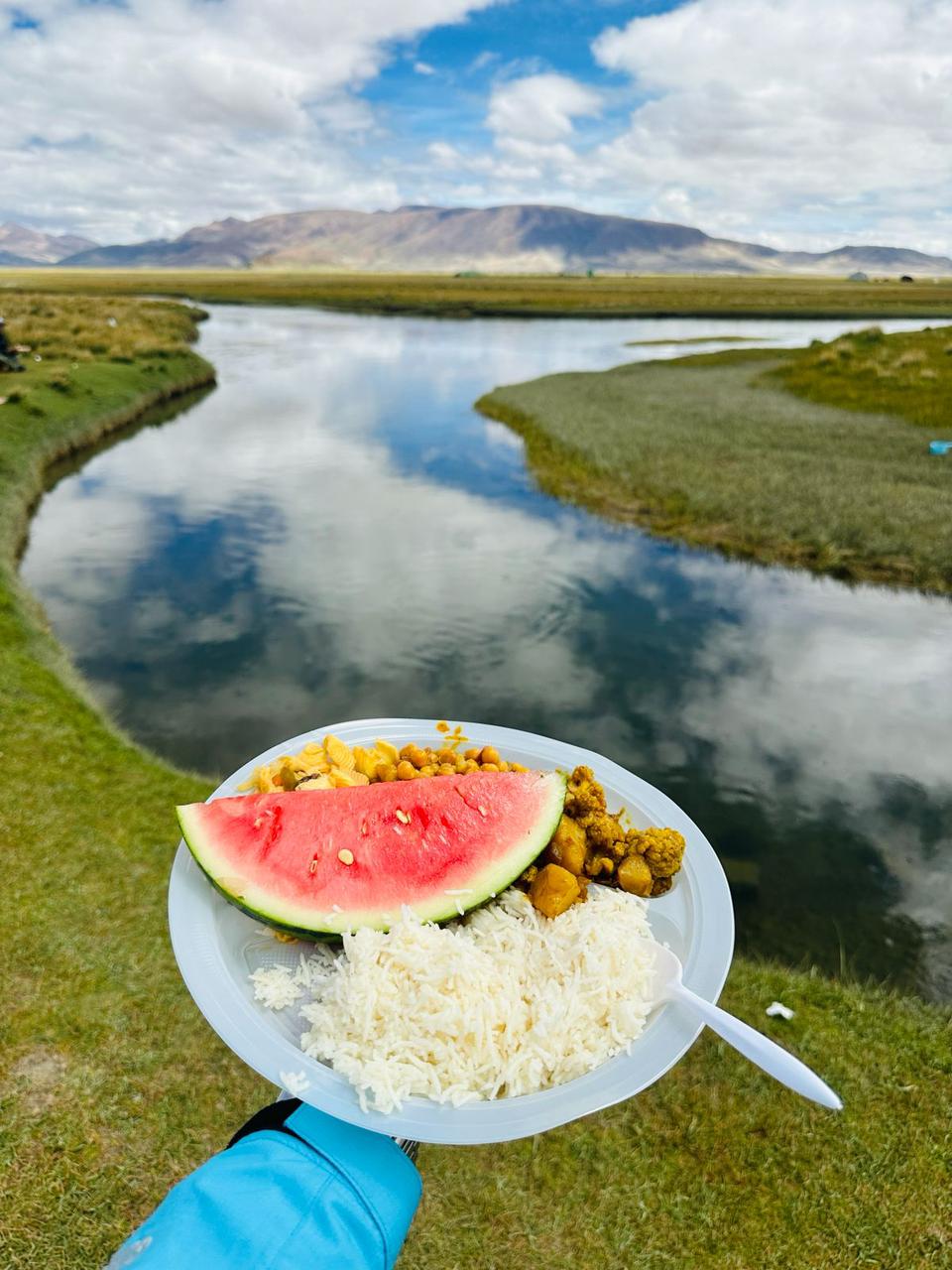
Meals will be pure vegetarian since the tour respects the sanctity of Mount Kailash and the spiritual essence of the Saga Dawa Festival. It confirms the local custom and helps in your spiritual journey into purity and mindfulness.
Fresh and nutritious vegetarian food is prepared that keeps the pilgrims energetic throughout their journeys. These generally include rice, lentil soup, vegetable curries, noodles, bread, and soup. In other places, typical Tibetan dishes of momo, vegetable dumplings, and thukpa-a kind of noodle soup-is also available.
In case the guests have any eating habits or food preferences, like Jain food requirements, such information should, in advance, be made available to the tour organizers as most meals exclude onions and garlic.
Hindu Pilgrims: Sattvic Meals
Apart from the Hindu pilgrims, Mount Kailash is Lord Shiva's abode; therefore, part of their pilgrimage involves following the sattvic diet. Sattvic food is pure, wholesome, and vegetarian, excluding items such as onions, garlic, and processed foods.
Meal Services for Hindu Pilgrims:
- Breakfast: Fresh fruits, porridge, nuts, and herbal teas.
- Lunch: Steamed rice, dals, vegetable of the seasonal type, a small portion of yogurt, roti.
- Dinner: Khichdi-rice and lentils, vegetable curry, and chapati.
- Roasted nuts, dried fruits, and herbal drinks constitute snacks.
- Special Considerations: Food is prepared without onion and garlic, as these are considered tamasic and sattvic traditions.
Buddhist Pilgrims: Simple and Nutritious Vegetarian Meals
The Saga Dawa Festival celebrates the birth, enlightenment, and parinirvana-Death of the Buddha Sakyamuni- in Tibetan Buddhism. Many adopt strict vegetarian practice during this spiritual self-discipline and expression of loving-kindness for all creatures. The preparation by the monastic communities serves not only food to visitors and residents but also tea with butter to the less fortunate.
Meal services for the visiting Buddhist Pilgrims:
- Breakfast: Balep or Tibetan bread, tsampa-ordinarly roasted barley flour, and butter tea.
- Lunch: Thukpa-noodle soup, momos-dumplings, and steamed vegetables.
- Dinner: Rice, dal, and stir-fried vegetables with Tibetan spices.
- Snacks: Roasted barley, dried fruits, sweetened black tea.
- Special Considerations: Very little oil and spices were used to prepare meals so that there would not be a conflict with the concept of simplicity in Buddhist practices.
Jain Pilgrims: Strict Vegetarian and Rootless Meals
Food for the Jain pilgrims consists of pure vegetarian food, even excluding roots of vegetables like potatoes, onions, and garlic, because in doing so, microorganisms present within the earth below get killed. Food is ascetic, simple, and well-prepared.
Meal Services for Jain Pilgrims:
- Fresh fruits: raw and a porridge cooked with either oats or barley or other cereals and the addition of nuts as seasoning. Only leafy/ petal vegetables added to rice, pulse, and vegetable curry should be on the lunch menu.
- Khichdi, roti, and vegetable sautés may form dinner.
- Snackings: Roasted nut, dried fruit, herbal tea.
- Special Considerations: Generally, preparing food does not involve the use of root vegetables; sometimes, even cooked in separate utensils so as not to cause contamination.
Bonpo Pilgrims: Traditional Tibetan Vegetarian Meals
Similarly, Bonpo pilgrims are the followers of the ancient Bon religion. They also follow vegetarian food during the Saga Dawa Festival. Their meal items are traditional Tibetan cuisine but in a very, very vegetarian way.
Meal Services for Bonpo Pilgrims
- Breakfast: Tsampa, Tibetan bread, and butter tea.
- Lunch: Thenthuk-a hand-pulled noodle soup-with steamed vegetables.
- Dinner: Rice, dal, and vegetable stew with Tibetan spices.
- Snacks: Roasted barley, dried fruits, and sweetened black tea.
- Special Considerations: Traditional Tibetan ingredients and flavours will be used in accordance with the Bonpo custom.
